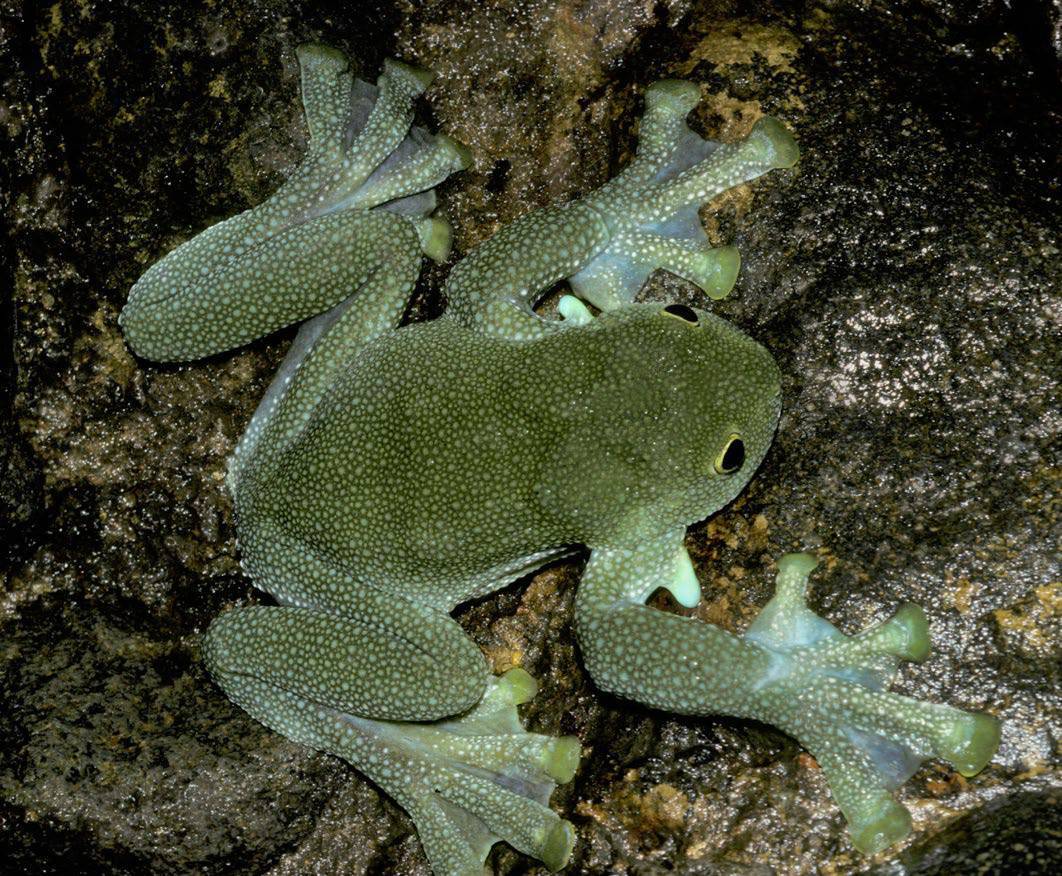Agricultural and livestock expansion, roads, settlements, oil extraction and mining have a significant impact on populations
Of the 635 species of amphibians registered in Ecuador, 57% are in some category of extinction threat (13% critically endangered, 23% endangered, 21% vulnerable). In addition, 12% are listed as near threatened and 4% with insufficient data. Only 27% (168) of species are out of danger.
These shocking figures are detailed in Ecuador’s Red List Assessment of Amphibian Species: A Multidimensional Approach to Their Conservation, published on May 6, 2021.
This study almost doubled the number of threatened species compared to the evaluation carried out in 2011. The research is the first collaborative work developed by the majority of amphibian specialists in the country and was supported by institutions such as Ikiam University, Private Technical University de Loja, the National Biodiversity Institute (Inabio) and the Ministry of the Environment (MAAE).
Most of the threatened species are found in the Andean montane forest and the páramo. The expansion of the agricultural-livestock frontier, roads, human settlements, mining and oil activities have an impact on amphibian populations, the study details. Furthermore, the potential synergistic effects with climate change and emerging diseases (apparently responsible for the sudden declines) were especially important among the threats.
“It is one of the most important works in amphibian biology that has been done nationwide. This list is a valuable tool for the MAAE, the National Police, the Prosecutor’s Office and the Judicial Council to achieve the conservation of the species and their habitats. The MAAE has already declared this Red List as official for Ecuador,” says Diego Cisneros, a biologist and professor at the Universidad San Francisco de Quito who also participated in the evaluation.
A total of 126 databases and online resources were used to consolidate the Ecuadorian amphibian data set. The final data universe included 37,328 records, of which 29,189 were located in Ecuador, out of a total of 635 taxa (plus the catesbeian frog, as an invasive species), which represent 100% of the species reported for the country.
The state of these species and their ecosystems is alarming: “When we talk about their habitats, we are not only talking about forests but also non-forested habitats such as moors. There is a fairly disorganized expansion of the agricultural-livestock frontier that is highly polluting through pesticides,” says Cisneros.
The study reveals high-risk areas located mainly in the vicinity of large and medium-sized cities such as Guayaquil, Quito and Lago Agrio. Medium to high risk areas are mainly found in the eastern and western foothills of the Andes Mountains, the northern Amazon, and the northern coast.
Meanwhile, low-impact zones are isolated and related to protected areas, inaccessible forests, and mountain ranges in northwestern Ecuador, the Amazon foothills of the Andes, and southern Amazonia.
“What is happening in the west of the country is worrying. In this area most of the natural ecosystems are almost totally destroyed. Before it was said that Esmeraldas was the green province, now it is running out of forests, wetlands, lagoons, mangroves. In the Ecuadorian Chocó (between Esmeraldas, Manabí, Pichincha, Santo Domingo, Imbabura and Carchi) there are only small fragments, cracks remaining. The African palm is destroying natural forests,” says Cisneros.
Mining activities also have a great impact on amphibians even in private and public protected areas, since many of these areas are concessioned to companies that extract metals such as gold and copper.
“Mining is not only going down the mountain, but all the waste that pollutes the air and water especially. Amphibians are very sensitive to chemical changes in the water and where there is mining are the areas where there is the greatest diversity of these species,” says Cisneros.
One of the objectives of the study is that there is an official document that clarifies the criteria for the authorities to promote the conservation of habitats.


0 Comments